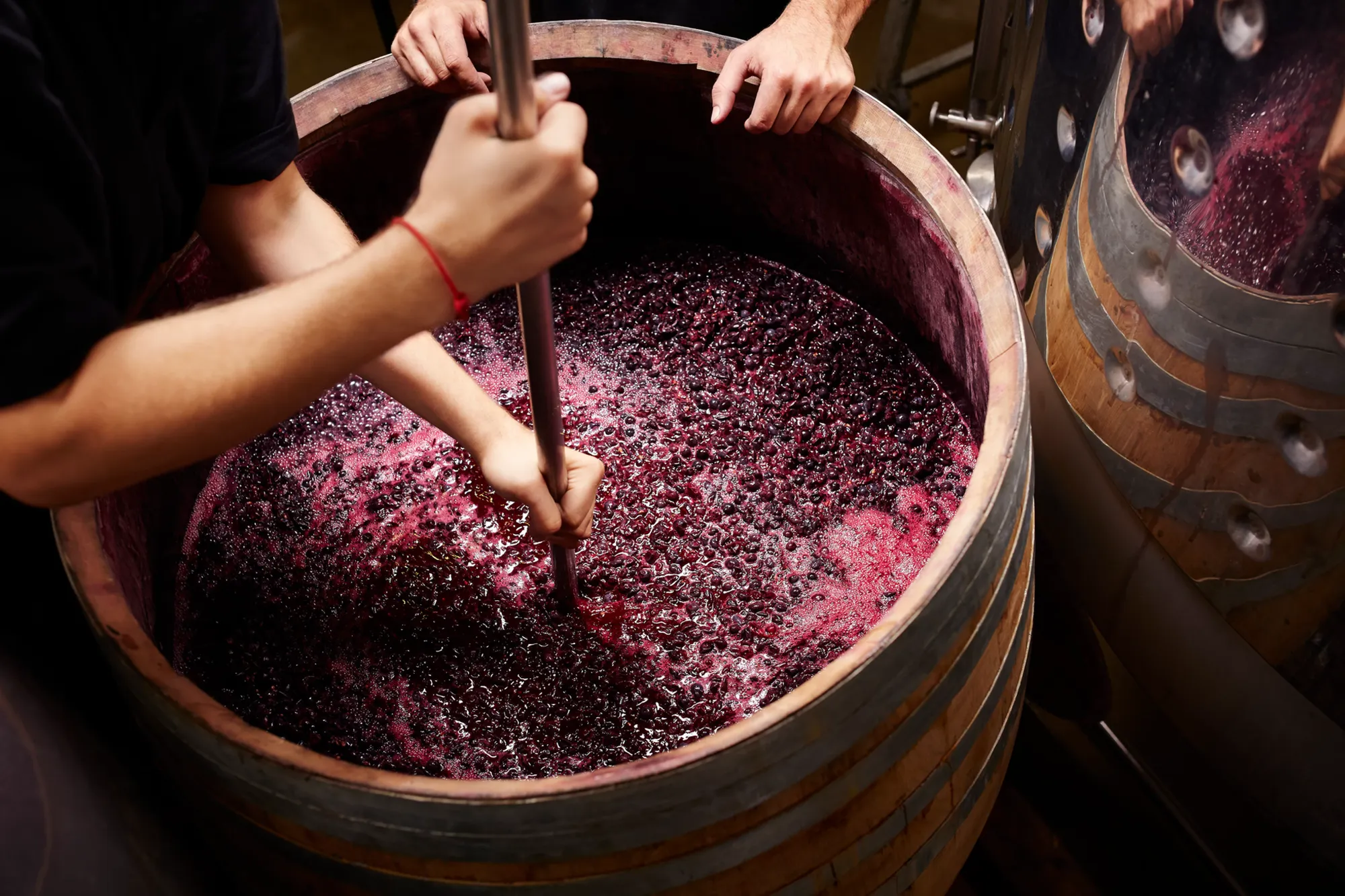What does the colour of your wine really tell you?

When judging the colour of your wine you need to pour a set amount into a glass (clear glasses are your best choice – those pretty pink ones might affect the appearance of the wine) and judge it against a white background – a white table, wall or piece of paper works fine.
Tilt the glass at an angle to judge the colour and the intensity – the colour at the centre of the wine will be deeper than at the rim.
Where does the colour come from?
Have you ever peeled a red grape?
No? Lucky you. Any amateur or professional chef can tell you it is a right pain in the fingers.
Anyone who has done a WSET L1 Wine course will probably tell you the same. So, if you’re feeling masochistic come down to try peeling some grapes at one of our wine courses. The course is really more about the wine – peeling grapes is only the first couple of minutes or so.
But, if you do ever decide to peel a red grape, you will find that your fingers, tablecloth and napkins can become stained.
This is because all of the colour for wine comes from the pigments in the grapes – colour is then extracted from the grape during the winemaking process.
Simply put - white wine is made from white grapes (mainly) with no skin contact, rose is made from black grapes with a small amount of skin contact and red wine from black grapes with a longer amount of skin contact. Orange wine is a white wine made from white grapes with skin contact, so, just like red wine.
Some grape varieties have more colour than others – a Pinot Noir or Gamay is going to be lighter in colour than a Cabernet Sauvignon or Malbec.
The winemaker can decide on how much colour to extract from the grapes depending on the style of wine they’re looking to produce.
Oxidation or Ageing
A white wine will gain colour as it ages: moving from lemon coloured (not quite the same as yellow) to golden to amber (orange) and eventually brown.
Red wine will lose colour as it gets older, going from purple to ruby, to garnet and finally to brown.
The vast majority of wine is designed to be drunk when young so this won’t really come up that often, and far more with reds than whites.
This is not set in stone as again the winemaker can influence the colour of the wine in many ways – how it’s been made, matured, and stored - in essence, how much oxygen it’s exposed to – think in terms of stainless steel (SS) vs Oak – oak barrels allow the wine to exposed to micro-oxygenation as they are watertight but not airtight. Where the wine is made will also impact this, a much warmer and more humid climate will mean a wine will age faster than in a cooler one.
Appearance VS Expectation
The colour of a wine can fool us. We tend to expect a deep coloured wine to have high levels of alcohol, tannin and more concentrated flavours.
If you look at a Barolo, they can be light ruby in colour – yet these are big flavourful wines with high levels of both tannin and alcohol.
A wine that is golden in colour could automatically make you think of a sweet Sauternes or Tokaji – yet could also be dry, such as a Californian Chardonnay or a Viognier or even a white wine with some age.
Don't let it fool you
Many students in wine exams often make a judgment based on the colour which will then influence how they write their tasting notes, regardless of what they actually taste and smell.
Whilst a wine’s colour can give you some information about the wine it can also mislead you. So, it is better to make your assessment of a wine based on the nose and the palate and only judge the colour for what it is – just another element that makes wine so enjoyable to both drink and study.